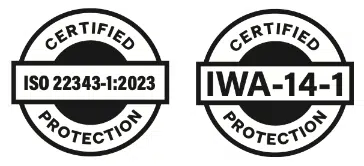In 2021, The Protect Duty was unveiled by Home Secretary Priti Patel, and is expected to bring significant changes to the events industry, as well as the way venues and event organisers go about their work. Put simply, the Protect Duty is a new legal requirement aimed at venue owners and event organisers, that ensures they will keep people safe from terrorist attacks.
The United Kingdom was forced to face a new reality in 2017 when 23 people died from a suicide attack at the Manchester Arena. Currently, in 2022, there are no concrete requirements to take any steps to prevent a terror attack – whether it be installing HVM measures around a venue, ensuring staff is trained, or creating an action plan. Yet, following a campaign led by Figen Murray, whose son Martyn died in the incident, the UK Government is now seeking to enforce new laws that will make it a requirement to take preventative action or know what to do in light of an attack. This article will cover the Protect Duty consultation (including its legal ramifications), the subsequent findings, and a critical analysis published by The Institute of Occupational Safety and Health (IOSH).
What Are the Legal Ramifications?
In 2021, The Protect Duty was unveiled by Home Secretary Priti Patel, and is expected to bring significant changes to the events industry, as well as the way venues and event organisers go about their work. Put simply, the Protect Duty is a new legal requirement aimed at venue owners and event organisers, that ensures they will keep people safe from terrorist attacks. It is important to clarify, however, before diving into the details of the Protect Duty, that the proposed duty is not criminal law like a health and safety law – I.e., non-compliance will not result in prosecution or a criminal record for those found culpable. As such, there is an important limit on the legal liabilities of those with duties under this law. For non-compliant organisations civil sanctions such as fines will be put in pace. It may be helpful to liken the Protect Duty to a fire risk assessment, with the objective to drive forward improved security – whereby owners and operators are educated on the potential threats and danger levels, with the tools to implement reasonable, proportionate and coordinated security measures in response.
A Snapshot of the Protect Duty
For many event organisers around the United Kingdom, the Protect Duty will not change much – it could simply mean that much of what they do already is enshrined in law. However, for others, it could mean creating an action plan to proactively understand the security vulnerabilities of their venue or event. It is, therefore, incredibly important to understand the basics of the consultation document, so organisations can take the correct steps towards developing an effective security plan. First, the Government clarifies that it does not want to add to the cost of hosting events, but that financial considerations must be made with the need to save lives in mind. Furthermore, the consultation outlines that the size of the venue or event will have a considerable impact on what measures will need to be taken, specifically outlining the Protect Duty will mostly affect venues capable of holding 100 people or more. The Government has also considered the question of outdoor public places such as parks, city centre squares, and pavements on bridges – all places that are particularly vulnerable to low-skill terror attacks (I.e., hostile vehicle attacks or stabbings). Finally, the consultation document notes that larger organisations – ones that employ 250 or more people – which operate at publicly accessible locations or have multiple premises where there is regular public footfall, could be liable.
Protect Duty Findings
On the 10th of January 2022, the Government published its response to the Protect Duty public consultation, which ran from the 26th of February to the 2nd of July 2021. 2,755 responses were received from a variety of organisations, sectors, and campaigners, with the majority supporting the government’s proposals to introduce stronger measures, including legal requirements for some public places to ensure preparedness for and protection from terrorist attacks. Furthermore, 7 in 10 respondents were in agreement that organisers responsible for publicly accessible locations had a responsibility to take appropriate and proportionate measures to protect attendees from attacks. This could include training staff to respond promptly and appropriately to an attack. There was also agreement that venue capacity should determine whether or not the duty should be applied – I.e., if an event is on the smaller side, creating a security plan is not necessary. In fact, most respondents believed that larger organisation should be taking proportionate actions.
Despite a general agreement amongst most respondents, there was an even split in opinions regarding an inspectorate and civil penalties. Half the respondents were in favour of an inspectorate that would identify key vulnerabilities and areas for improvement, as well as share best practices. There was also an even split regarding the use of civil penalties to ensure event organisers and venues comply to the duty.
Analysis: How Clear is the Protect Duty?
Work on the Protect Duty is continuous. To further develop the legislation, which is hoped to be introduced to the Parliament as early as possible, the Government is actively consulting a range of stakeholders and other government departments alongside using feedback from the consultation. The importance of acknowledging and managing a terrorist threat is clear, and the events business has a solid interest in fulfilling this duty. Yet, questions regarding the parameters and extent to which companies and venue operators can be obliged by the law to quantify, asses, and manage the risk remain. Many event organisers are worried about the implications that follow the Protect Duty, as the guidelines currently lack some clarity. To better understand the Protect Duty and its possible implications, The Institution of Occupational Safety and Health (IOSH) has published two articles analysing the Protect Duty and the extent of its impact.
The first thing to consider when reading the Protect Duty, is what is meant by the term ‘public space.’ The Government document explains that this may include anywhere that is open to the public or where tickets may be purchased to gain entry – this does not include offices or closed workplaces. It is noted by the author of the IOSH article that the wording of this section and others is vague and may reveal a misunderstanding of how events work. The document’s focus on venues and venue operators misses the important role of event organises and that it is the event itself that is usually the target of an attack, not the venue. Furthermore, the pandemic has revealed that venues cannot easily impose a set of controls for the whole site in which event organisers operate. This is especially true during the construction and set up phases where event organisers control access to large parts of the venue during the load-in and load-out phases. As such, it is still relatively unclear who the legislation will apply to, and whether it is appropriate. Second, the document clearly outlines that the costs of compliances will be minimal and proportionate. It proposes that compliance should be risk-assessment based with requirements that mirror health and safety risk assessments. Yet, it is important to consider the efforts and funding that goes into training staff and to conduct safety risk assessments – according to IOSH there is a clear cost impact here.
As it stands, the Protect Duty is still in the works and yet to be enforced. Although the parameters and details of the legislation are not completely clear, there is currently a list of helpful agencies that can assist event organisers and venues, such as the CTSA, CPNI, etc. Home secretary Priti Patel notes that: “My number one priority is keeping people of the UK safe…we have worked closely with Figen Murray, victims’ groups, and partners to develop proposals to improve protective security around the country.” Patel went on to announce that to further support the public and private sector, the Home Office is collaborating with the National Counter Terrorism Security Office (NaCTSO) and Pool Reinsurance to develop a new interactive online platform, due to launch publicly this year. The site is currently undergoing user testing ahead of its formal launch. The platform will provide a central digital location for advice, guidance, e-learning, and other helpful content – it will provide support for all organisations, not just those captured by the Protect Duty.






